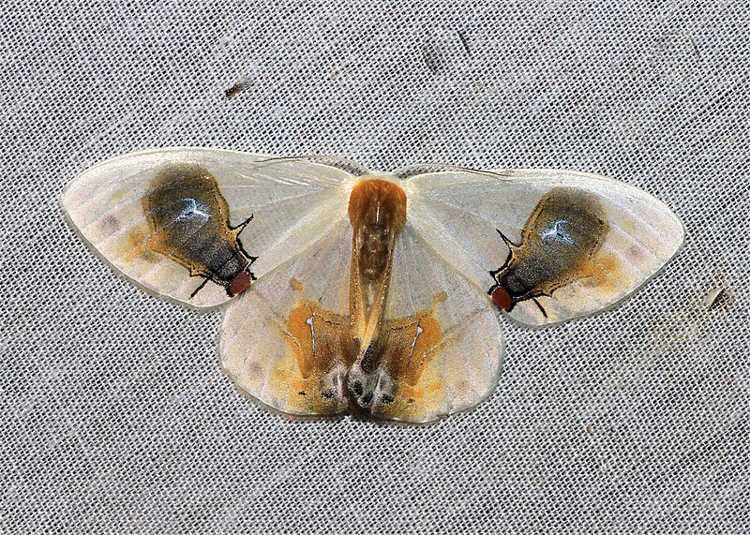We’ve seen plants and insects posing as something else entirely in order to confuse their natural predators, but Macrocilix maia, a moth native to Southeastern Asia, takes mimicry to a whole new level by literally painting an entire scene on its wings.
Looking at a Macrocilix maia moth, it’s impossible to ignore the scene painted on its wings – two flies feasting on some brown spots that could be mistaken for fresh bird droppings. It’s a pretty disgusting picture, and apparently we’re not the only ones who think so. Many of this moth’s predators tend to skip on insects feasting on bird droppings, associating them with potential disease, so the natural pattern acts as a defense mechanism for the otherwise helpless insect. And as if this visual representation of flies eating bird droppings wasn’t impressive enough, the moth reportedly also gives off a pungent odour that could be mistaken for actual bird droppings.

Photo: Alexey Yakovlev/Wikimedia Commons
I know what you’re thinking – these photos must have been edited; and I don’t blame you, the flies look way too realistic to be real. The outline of their body is pretty accurate, especially the head, the brown splashes also appear to be real, and there’s even light reflecting off the bodies of the “flies”. How did the moths even develop this specific pattern, it’s not like they knew what would keep predators at bay, right?
Well, as it often seems to happen, the evolution of Macrocilix maia was most likely random. Eons ago, a slight mutation caused a moth to have a pattern that somewhat resembled the clear scene we now associate the whole species with. It proved effective enough to keep predators at bay, so the genes were passed on. Then natural selection happened.
The moths that suffered mutations toward the flies-feasting-on-droppings pattern were more likely to reproduce, while specimens featuring other motifs didn’t. It was survival of the fittest, and the pattern likely evolved over generations, with the most believable pattern outliving the others. The original patterns was probably nowhere as realistic as it is today, but it evolved over time. This is probably still a work in progress, with slight mutations making the disgusting picture even more realistic.
We’ve seen some pretty mind-blowing mimicry, like this moth that perfectly resembles a dead tree leaf, or this harmless caterpillar that resembles a menacing snake’s head, but Macrocilix maia is the first creature I’ve seen mimicking not a think, but a relative complex scene complimented by an appropriately foul smell.






